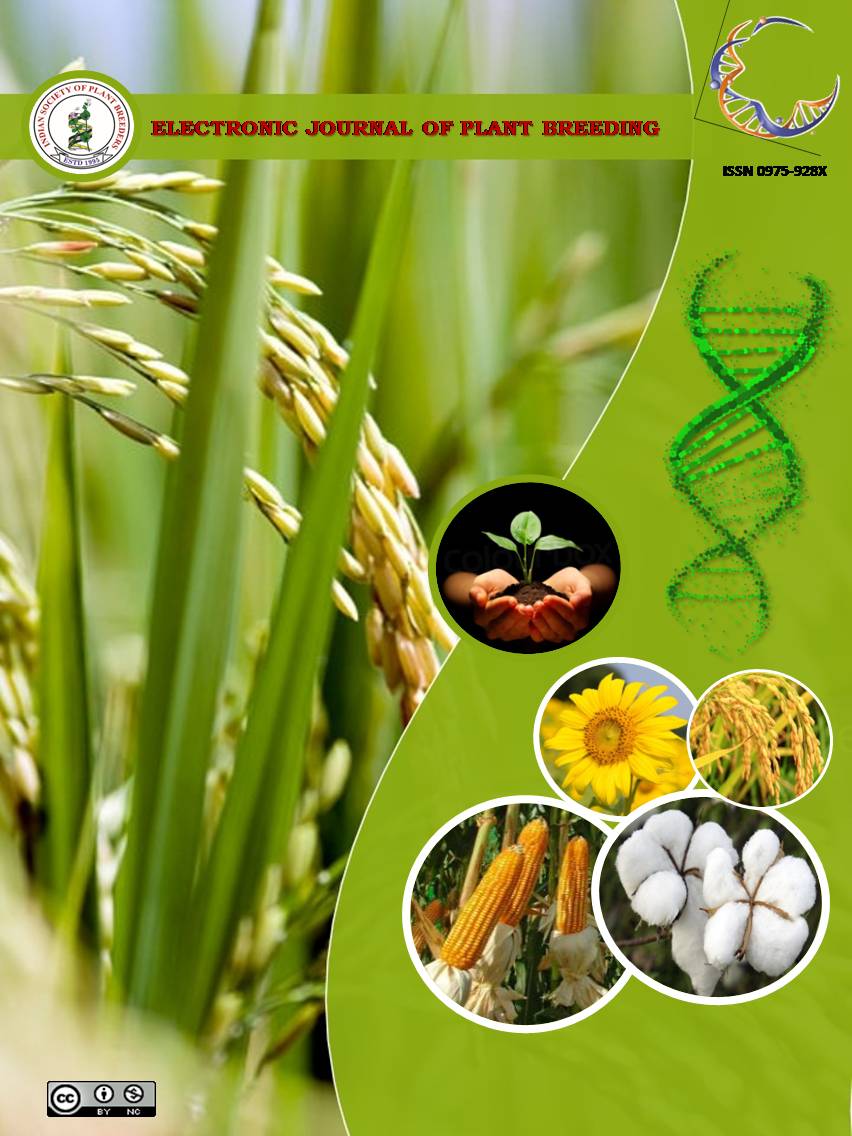Characterization of amaranth genetic resources for agro-morphological and nutritional traits in submontane Himalayan region of India
Abstract
Grain amaranth is a promising crop because of its wide adaptation, nutritional importance and multiple uses. Forty eight grain amaranth accessions were evaluated in augmented block design along with 4 checks for 10 quantitative traits in two growing seasons and the grain samples of 52 along with three additional checks were analyzed for nutritional parameters. Analysis of variance for morphological traits resulted in significant differences among treatments for both the years. Adjusted mean values of quantitative traits for each year and mean values of nutritional traits were used for correlation and multivariate analysis. There were 24 and 16 positive significant associations in the years 2013 and 2014, respectively among various grain yield components. Grain yield per plant was significantly positively associated with plant height (0.459, 0.574), leaf length (0.615, 0.321), and petiole length (0.726, 0.381) during both the years. HCA of morphological data showed that national check variety Durga occupied a separate cluster as a singleton in 2014andin 2013, where IC 42346-6 was also in the same cluster. The protein, TPP, DPPH and TEAC content of amaranth accessions varied from 8.99±0.31 to 15.26±0.30%, 2.44±0.08to 4.86±0.13 mg GAE/gDW,4.72 to 8.47 uMTE/gDWand 15.21 to 33.63 mg GAE/gDW, respectively. Wide range of variation was also observed for iron (66.67-83.19 ppm) and zinc content (28.47-42.98 ppm). Correlation among nutritional traits revealed highly significant positive association of TPP with DPPH and TAA. PCA analysis of nutritional traits revealed that PC1 distinguished those accessions that had high values for TPP, DPPH and TAA, whereas PC2 distinguished accessions with high protein and zinc content. Scatter plot of PCA1 and PCA2 showed overlapping of Indian Himalayan accessions with Russian origin accessions. Results of cluster analysis were similar to that of PCA for nutritional traits. It was observed that high yielding check varieties of amaranth were low in protein, TPP, DPPH, TEAC, iron and zinc content in comparison to the accessions with high values for both the traits. The accessions identified for nutritional traits could be used in breeding programme for the improvement of nutritional traits in adapted varieties.

It is certified that:
- The corresponding author is fully responsible for any disputes arising due to the publication of his/her manuscript.
- The article has been seen by all the authors who are satisfied with its form and content.
- The sequence of names of authors in the by-line is as per their relative contribution to this experiment, giving due credit to all scientists who made notable contribution to it.
- All the authors fully understand that inclusion of any other co-authors or exclusion of any co-authors is not possible once the article has been submitted to the journal.
- The corresponding author takes full responsibility for this article.
- The address of the organization where the research was conducted is given.
- The article is exclusive for this journal, and the results reported here have not been sent (and will not be sent during its consideration by this journal) for publication in any other journal.
- Authors agree to abide by the objective comments of referees and do agree to modify the article into a short note as per the recommendation, for publication in the Electronic Journal of Plant Breeding.
- If published in Electronic Journal of Plant Breeding, the copyright of this article would vest with the Indian Society of Plant Breeders, who will have the right to enter into any agreement with any organization in India or abroad engaged in reprography, photocopying, storage and dissemination of information contained in it, and neither we nor our legal heirs will have any claims on royalty.


